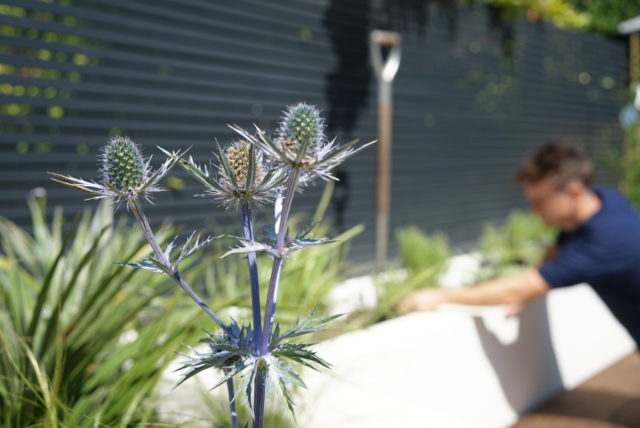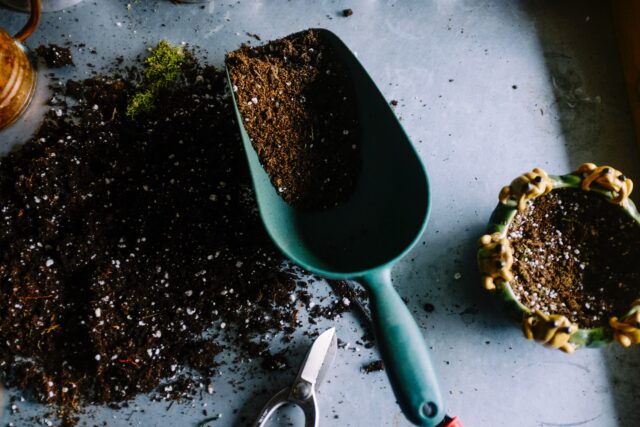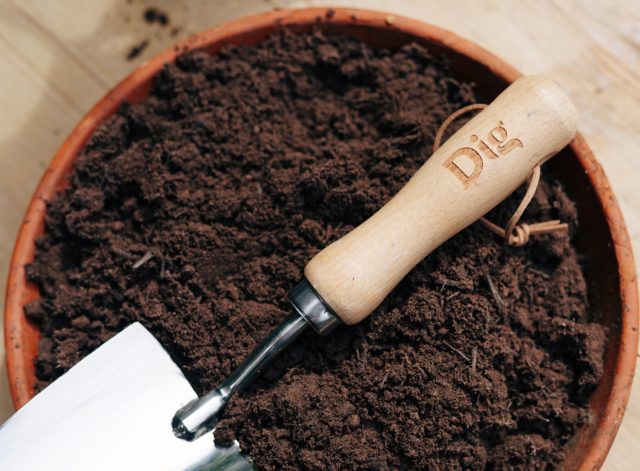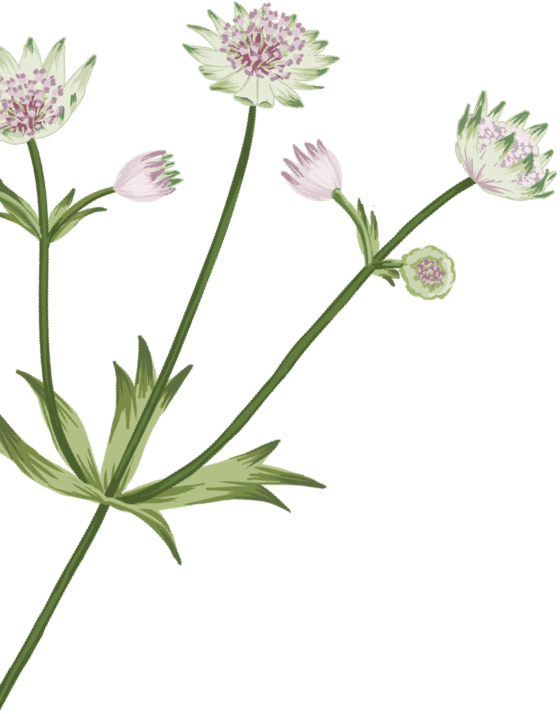Stay on top of weeds
With the warmer weather on the up, you’ll notice a surge in growth across your garden or outdoor space – and that means weeds too. Whether you’ve planted, or are about to plant, staying on top of weeds will ensure that new plants will have space and nutrients to thrive, and that existing plants won’t have to share their space with other thirsty contenders.
Plant Dahlia tubers
Dahlias are a summer showstopper that we love at Dig. The variety available and the huge array of styles and looks make them an obvious choice for any sunny garden. There is almost certainly going to be one that goes well with your existing plants. We’ve put together an entire article on Dahlias this month but, for a TLDR version, plant tubers in pots and peat free compost this month and pop them on a windowsill or in a greenhouse, planting them out into the ground or moving them outside in May once any chance of frost has disappeared.
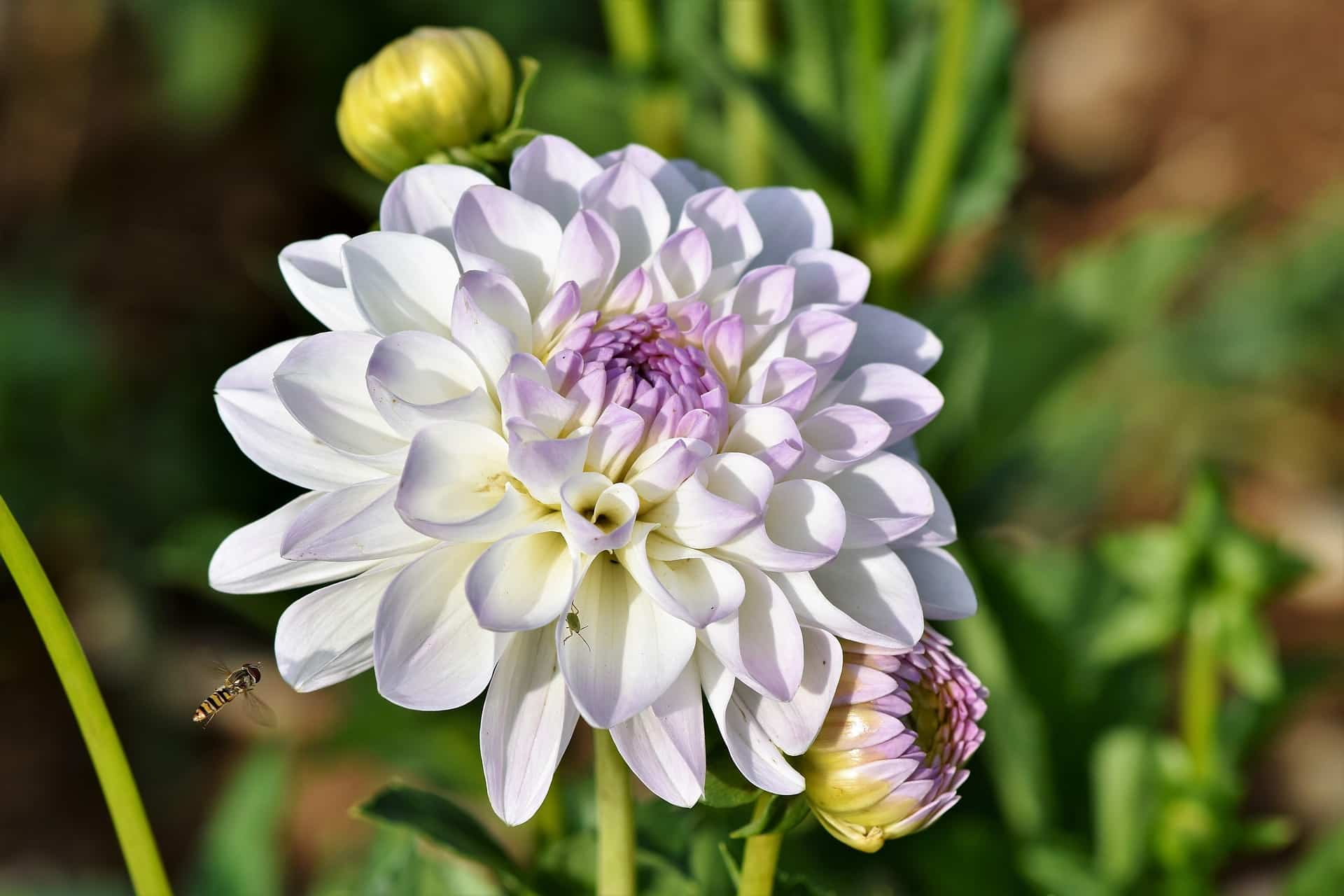
Staying on top of new growth
As our gardens spring to life, there will be lots of new growth on the way – some of it quicker than you might expect. Here are a few tips to help it all grow beautifully:
- Support plants as they grow. Whether using canes or other supports, or by tying climbing plants to pergolas and trellises, a little support can go a long way in helping plants establish strong stems or covering walls and fences healthily and thoroughly.
- Feed where there’s a need. With new growth, plants will be using a lot of energy stored from last year. As they churn through it, it’s worth feeding them with an all-purpose fertilizer to ensure those reserves are replenished for maximum growth and display.
- Dead-heading. As daffodils and, in turn, tulips come to an end dead-head the flowers and seedheads so that the plant doesn’t waste any energy on unwanted seeds. All the energy taken from the sun will then go into the bulbs for next year’s display.
Clear away old growth
With new growth coming through, you’ll be able to easily see what hasn’t made it through the winter or which winter plants are now winding up. Remove and dead growth and add to your compost heap.
Plant Anemones
As with Dahlias, spring is a great time to plant Anemones which will bring much-needed flowers in late-summer if planted now. They’re resplendent, abundant, and spread naturally – so a fantastic plant to introduce for a bit of easy enjoyment later in the year.
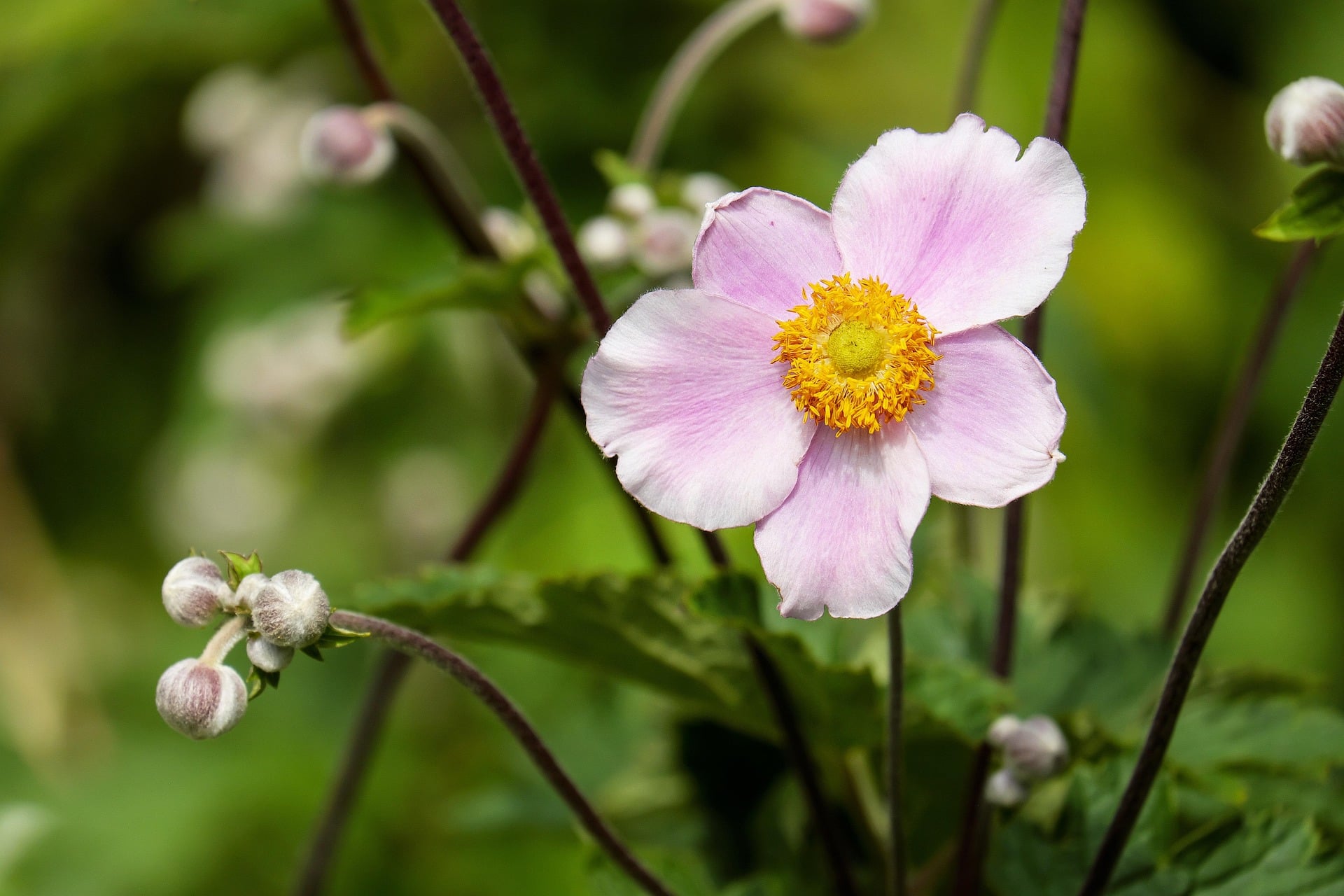
Cut back Cornus
Cornus are beautiful plants for winter colour with their vibrant flame–licked stems. Now that winter is out of the way though, cut Cornus back to 5-7 centimetres from the base of the plant. New growth will soon kick off ready for leaves in summer and more beautiful stems next winter.
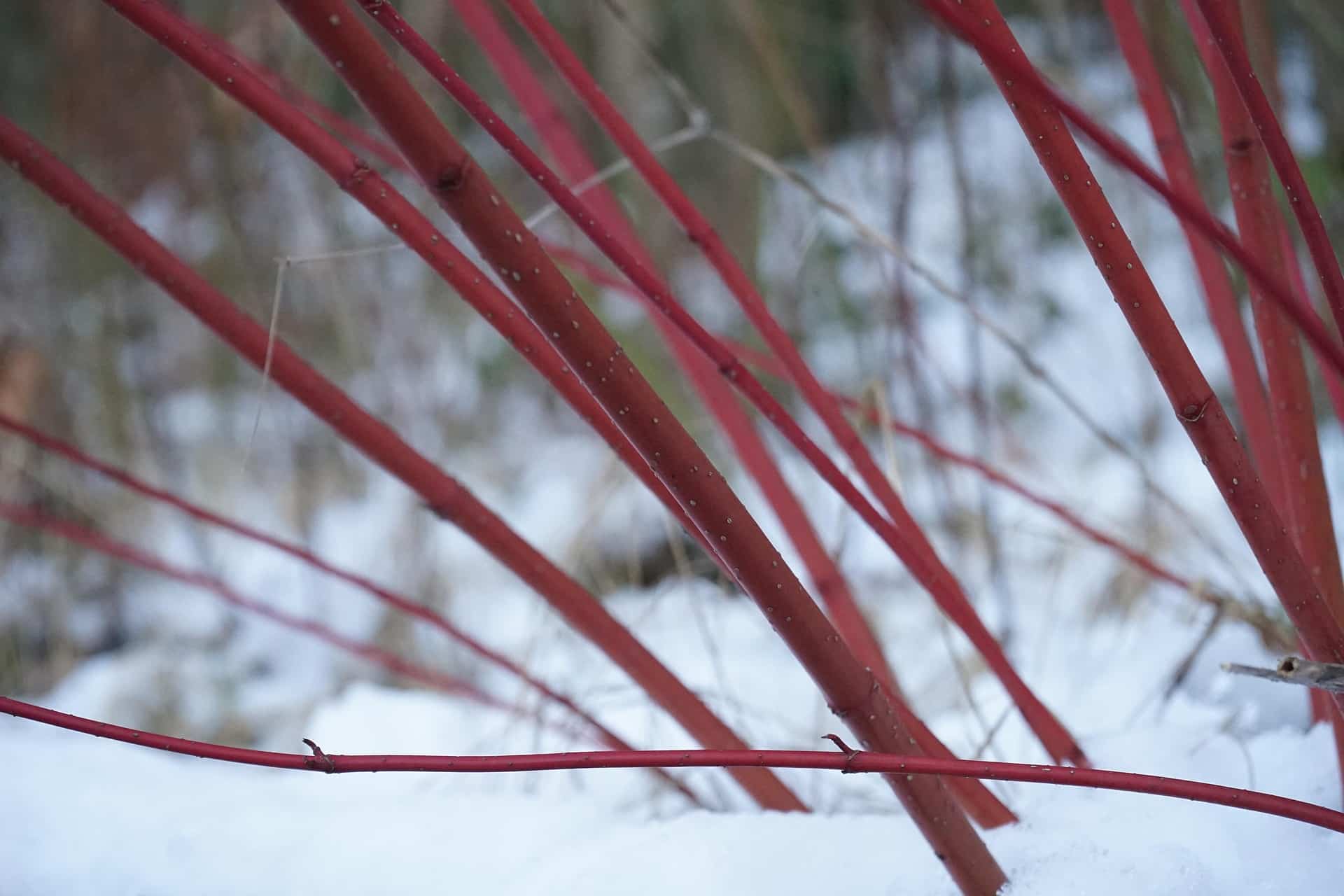
The beautiful red stems of Cornus that look very attractive in winter can be cut back now, ready to re-emerge for next year.
Prune Rosemarinus
Rosemary can benefit from a tidy up at this time of year. Take newer stems, rather than older woody ones, and reduce by roughly a third and tighten up into a neat shape. You’ll be rewarded with a bushier looking plant that doesn’t take over – especially if it’s in a flower bed.
Trim Lavendula
It’s a good time to give Lavender a light haircut to stop it from becoming too ungainly and ‘woody’ as they say. A gentle prune and a neaten up into smart ball shapes should do the trick.
Aphid-watch
Aphids are particularly fond of new shoots. If you notice them on newly sprouting plants, remove as many of them as possible by hand. Remember that the more biodiverse your garden is as a result of diverse planting, the more insects, birds and mammals you’re likely to attract. Ladybirds are particularly good for preying on aphids.
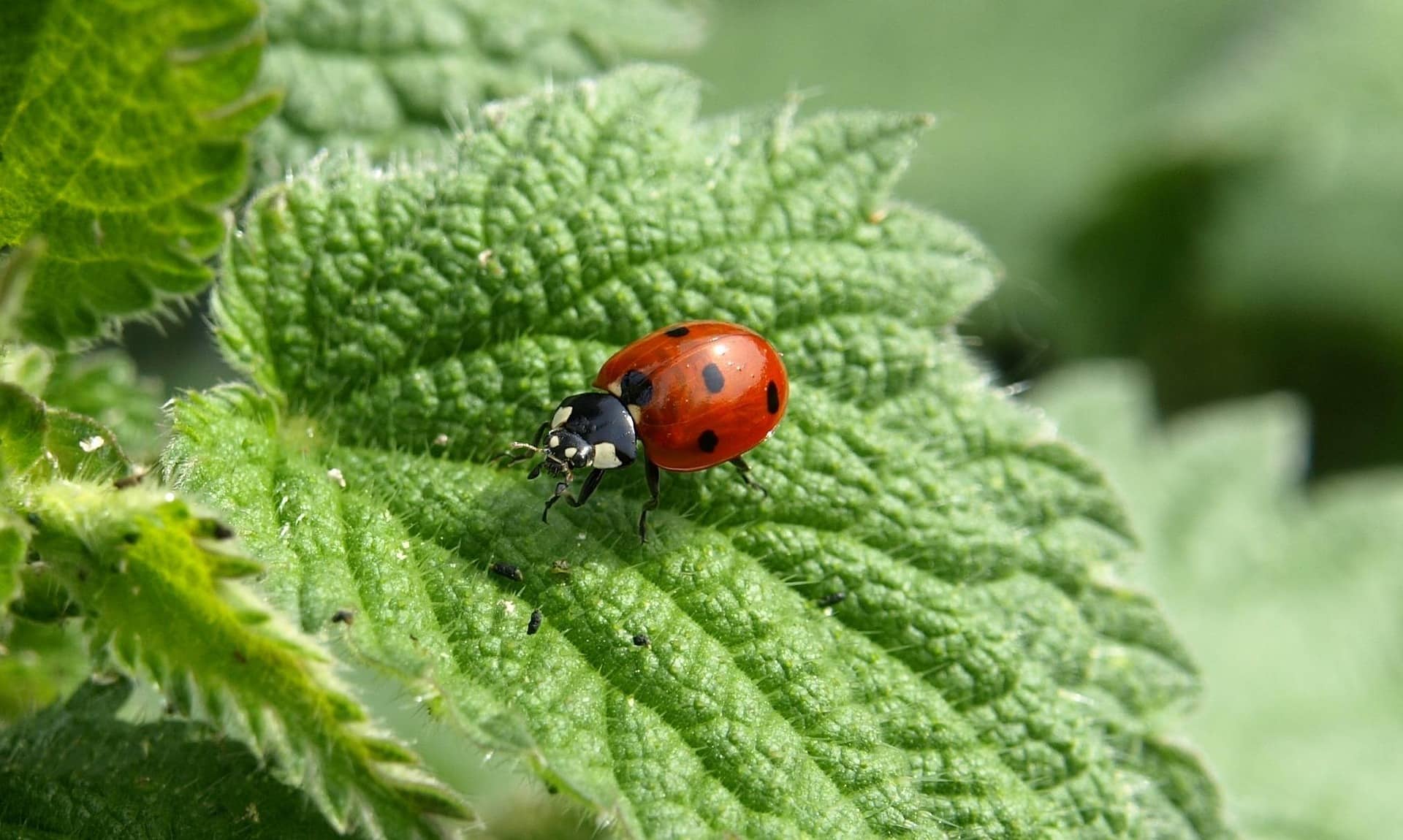
Ladybirds are excellent for keeping aphid populations under control.
Plant sweetpeas
Whether you’ve grown them from seed or bought plugs from your local supermarket or garden centre, now is the time to plant out sweet peas. Make sure they’re planted in some decent peat-free compost for the best results. Plant 20cm apart and pinch out the tops to encourage bushier growth.
Plant summer-flowering bulbs
Alliums, Dahlias, Gladioli, Freesias and Lillies are all great summer-flowering bulbs to plant now. They’re an affordable way of guaranteeing splashes of colour all through the summer. Your local garden centre will have a great selection and be able to advise on what will work best for your outdoor space and what will work with the rest of your planting!
Look after your lawn
We enjoyed seeing that the RHS has developed a new lawn designed to help encourage us to enjoy lawn flowers and a rougher, more natural look recently. It’ll be fantastic for pollinators and hopefully, if it takes off, will mean a more natural urban landscape for wildlife. Having said that, no one likes a bare patch and spring is the perfect time to seed a lawn if you’re experiencing any gaps. So, whether you seed it with wildflowers, natural grasses or good old fashioned lawn seed, spring is the season.
Nature watch
Our gardens are vital habitats for local wildlife and crucial for a health ecosystem, especially in more built up, urban environments. Here’s a few things you can do to help this month.
- Hedgehogs will have emerged from hibernation now so it’s a good idea to ensure you have left water out and, if you’re certain you have hedgehogs, consider leaving some food out for them too (meat-based cat or dog food, cat biscuits, or specialty hedgehog food are all good). It’s also worth checking there is enough space under your garden fence to enter and leave, even if only at one point – this helps create a hedgehog ‘highway’ for them to travel at night.
- Keep bird baths clean and keep feeders topped up, especially with the arrival of fledglings.
- With the arrival of fledglings, keep an eye on local cats… Try to position feeders and bird baths in places with good visibility and which, ideally, make it easy for our feline friends to pounce.


